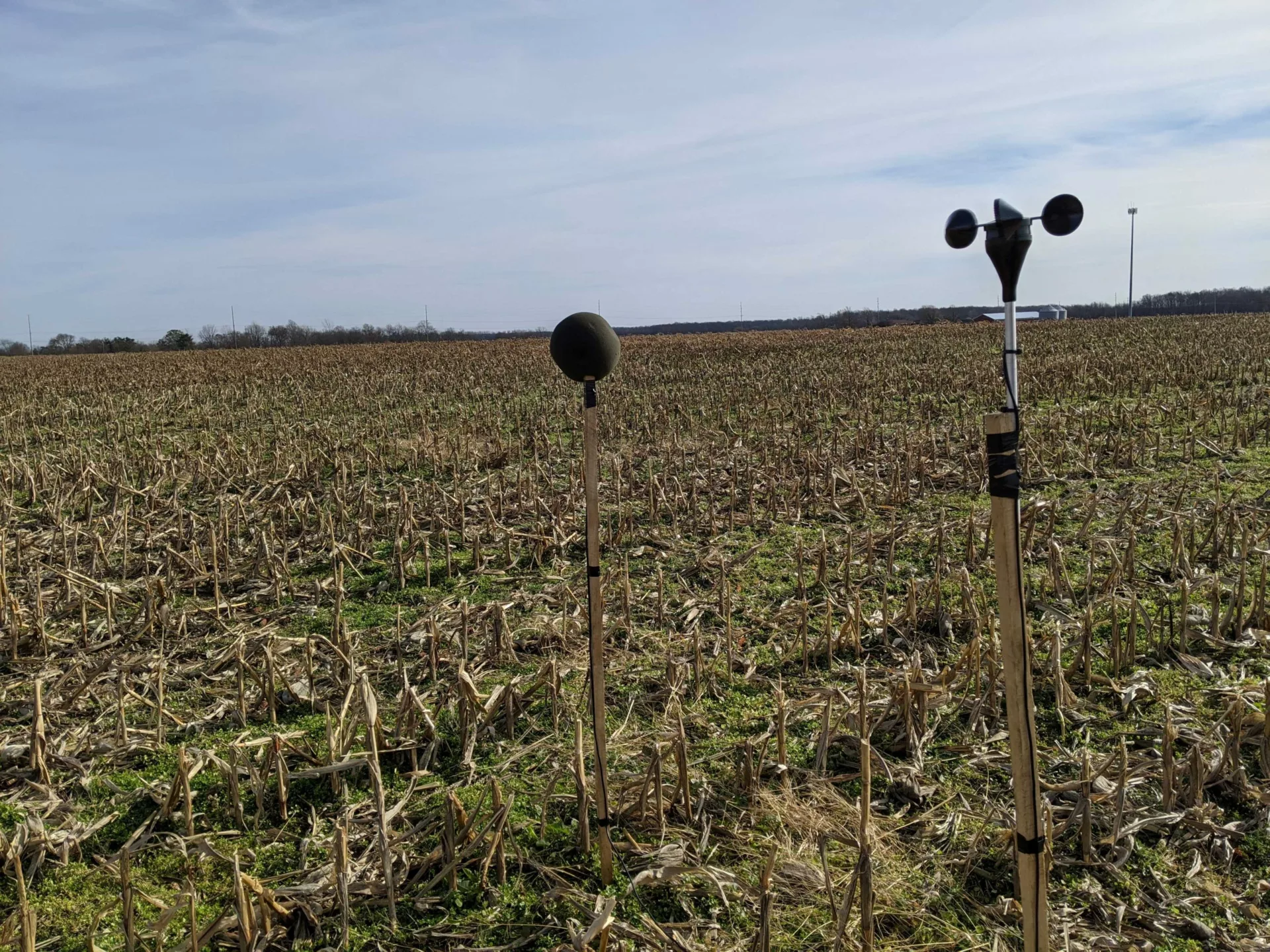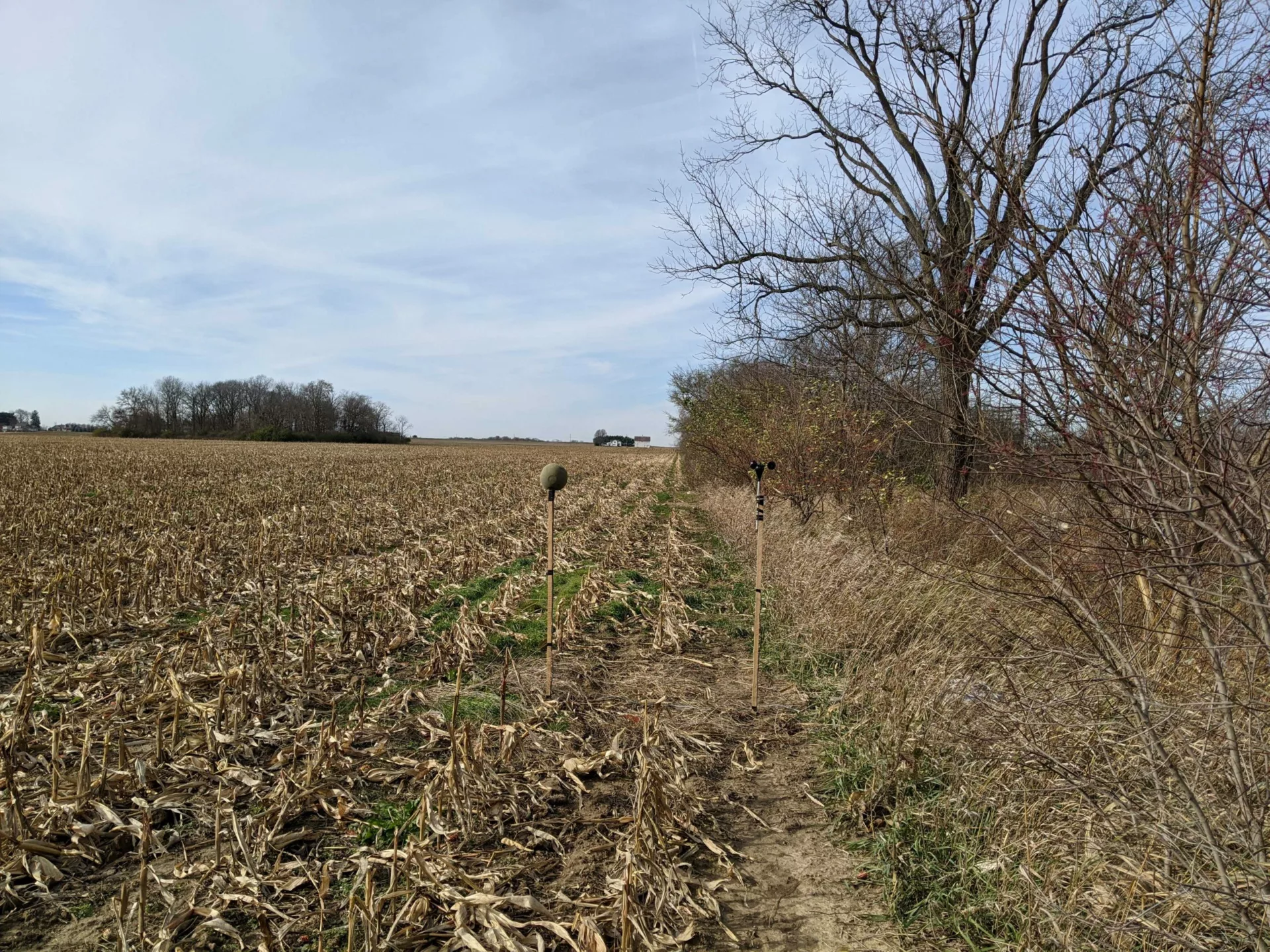The Wheatsborough Solar Project in Erie County, Ohio, was conceptualized as a photovoltaic power facility with an array of solar panels, inverters, trackers, and transformers and a maximum capacity of up to 125 MW. This project was proposed in a primarily agricultural area, with the nearest population center roughly three miles to the south. Most of the renewable energy projects in the United States are in similar areas. At the time the project was proposed, standards for solar power projects did not exist in the target location, so the project followed sound policies in place for other power generation types (e.g., conventional, wind). This required measuring, modeling, and reporting both the existing acoustical conditions of the area and any sound emitted from project components.
The Challenge
The Ohio Administrative Code (OAC) Chapter 4906-4 Section 8(A) outlines specific requirements for noise levels within the region. Part of this code mandates that organizations provide the OAC with noise information, including:
- Projected construction sound levels at the nearest property boundary.
- Projected operational sound levels at the nearest property boundary.
- Descriptions of noise mitigation measures.
- A background sound-level study performed prior to construction.
Previously, RSG supported the creation of a 2021 noise assessment report on the Wheatsborough Solar Project, including a battery storage facility. To keep the Ohio Power Siting Board (OPSB) informed on the project’s sound emissions, RSG performed updated sound propagation modeling. While the permitted array in 2021 included battery storage, the one RSG modeled in 2023 did not.
RSG’s Solution
Building upon our work in 2021, RSG referenced the previously conducted sound-level assessment, which included background sound-level monitoring and sound propagation modeling to predict operational sound levels at the nearest residences. Current work has updated sound propagation modeling due to equipment and layout changes.
While Ohio wind power projects must adhere to specific sound-level limits, the OPSB has no specific policies around solar power. As a result, the design threshold RSG used followed traditional OPSB restrictions for wind projects, allowing for measurements to exceed ambient sound levels by up to 5 decibels (dB) during the daytime or nighttime periods.
Through our analysis, we found that the existing soundscape had a daytime average of 51 dB adjusted for human hearing sensitivity (dBA) with a nighttime average of 48 dBA. Using the 5 dB interval standard set by the OPSB for wind power projects, this created a daytime threshold of 56 dBA and a nighttime threshold of 53 dBA.
Our team also conducted sound propagation modeling at over 230 residences throughout the project area, in accordance with ISO 9613-2 standards. These modeled sound levels were as high as 49 dBA, which is notably less than both the daytime and nighttime thresholds.
In addition, RSG’s previously conducted modeling and noise assessment included several mitigation measures to reduce sound levels at residences to the southeast of the project site. The first was to move the substation transformer about 150 feet to the northwest, and the second was modeling 7-foot-tall barriers on the east and south sides of the battery storage facility.
Based on our modeling work, our team concluded these mitigation efforts will play a crucial role in keeping operational sound levels below required thresholds. However, construction noise is still projected to rise above ambient levels throughout working hours, though construction will be temporary.
Noise control engineering insights like these are invaluable for policy makers and project planners, especially in the renewable energy space. Ultimately, RSG’s comprehensive noise assessment provided the project team with the information it needed to inform the OPSB permitting process.
Download a PDF






